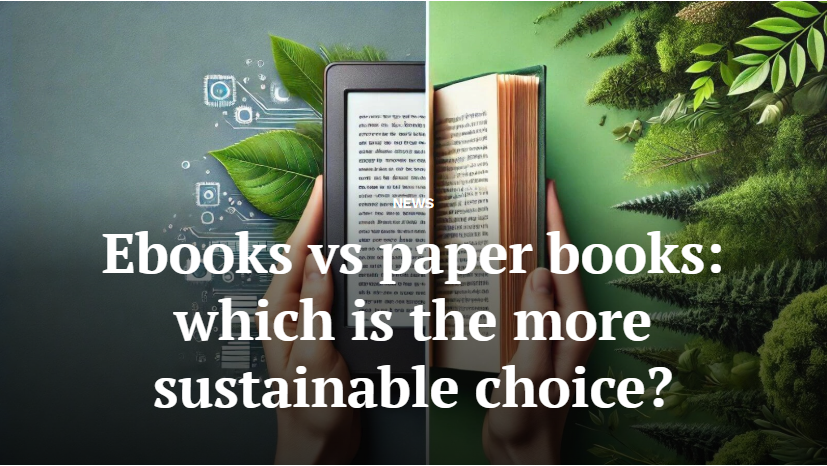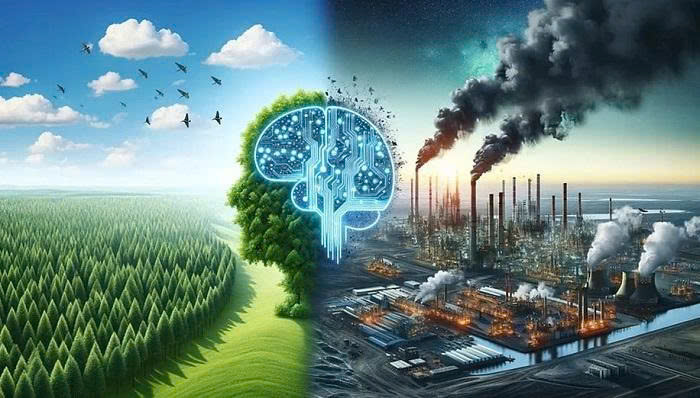Do eBooks truly save forests, or are they simply “rescuing dusty old bookshelves”? This is the question many people ask when choosing between eBooks and traditional printed books. So let’s take a closer look at this issue through a feature on Znews.
As climate change intensifies, readers are becoming increasingly aware of the environmental friendliness of different reading formats. With summer holidays and leisurely reading time approaching, many will opt for paperback books to easily share stories with others, while others prefer e-readers or audiobooks streamed through smartphones.
For those looking to make small lifestyle changes to reduce their climate impact, understanding the environmental effects of different types of books can help guide more conscious choices.

Factors that influence a book’s environmental footprint
At first glance, it seems like a simple question: which is greener — printed books or digital formats like eBooks and audiobooks? But the answer is more complex than it appears. It requires examining all the resources involved throughout a book’s lifecycle — from how books and devices are produced, to how they’re shipped, the raw materials and energy they consume, and whether they can be recycled.
Market share is also a key consideration. Currently, the popularity of reading on digital devices — especially audiobooks — is rising. According to the Association of American Publishers, audiobooks now hold roughly the same market share as eBooks in the U.S., at around 15%. Despite this trend, print editions remain the most widely used format.
Explaining why the publishing industry continues to focus on making printed books more eco-friendly rather than shifting fully to digital formats, Andrew Albanese, Editor-in-Chief of Publishers Weekly, stated: “Publishers want to preserve the traditional business they’ve built over hundreds of years. They’re committed to making print publishing as efficient, as clean, and as green as possible.”
Is print publishing really that polluting?
One thing is clear: traditional print publishing comes with a high carbon footprint. According to 2023 data from industry research group WordsRated, due to its use of pulp and paper, the print publishing industry ranks as the third-largest emitter of greenhouse gases globally.
In the United States alone, 32 million trees are cut down annually to produce paper for books. That’s just the beginning — printing and transportation add to the environmental toll, not to mention the many unsold copies that end up being discarded.
Although book destruction has long been an industry norm, publishers are increasingly reluctant to do so. Instead, many are donating unsold books, shifting toward print-on-demand, or — like Chronicle Books — reducing initial print runs to gauge demand before printing more.
Chronicle Books president Tyrrell Mahoney shared, “We believe it’s worth putting in a bit more effort to help reduce carbon emissions.”
Like many other publishers, Chronicle Books is also striving to use more sustainable paper. Mahoney said, “We’ve found a fantastic partner in India who has developed a method to recycle cotton materials into paper.”
Other publishers are revisiting how books are designed. You might be surprised to learn that some fonts are more eco-friendly, as they use less ink and require fewer pages.
Lucy Albanese, Senior Design Director at HarperCollins, noted, “So far, these subtle design adjustments have helped us reduce more than 200 million pages across 227 titles since last September.”
.jpg)
Paper is a major raw material in the publishing industry. Photo: Liveabout.
The Sustainability of Digital Publishing
In terms of raw materials, digital publishing appears to have a significant advantage over print publishing, as it doesn’t require paper — thus eliminating the need for wood supplies, pulp processing, and the transportation of materials. Moreover, leading tech companies in the e-reader market, such as Amazon and Kindle device distributors, have introduced recycling programs to help reduce electronic waste.
Corey Badcock, Head of Kindle Marketing and Product Development, stated: “By developing e-readers to reduce printed book consumption, Kindle devices have helped save around 2.3 million tons of carbon emissions over a two-year period.”
However, digital devices still generate a notable amount of carbon emissions, mainly during the manufacturing stage. Their casing is made from plastics derived from fossil fuels, and the minerals used in batteries require intensive resource extraction. Furthermore, their decomposition period is significantly longer than most waste produced from printed books.
.jpg)
Digital devices also emit a significant amount of carbon emissions, primarily during the manufacturing stage. Photo: New York Post.
Which Type of Book Is More Environmentally Friendly?
The short answer is: it depends. Mike Berners-Lee, professor of sustainability at the Lancaster Environment Centre in the UK, notes: “There’s no clear-cut answer” to this question.
He also shares insights into the pollution impact of different book formats for readers to consider. For example, the average e-reader device emits roughly 80 pounds (36.2 kg) of carbon during its lifecycle — equivalent to the emissions from producing about 36 small paperback books.
Another important factor is the reader’s passion for reading. Berners-Lee explains: “If you buy an e-reader and read a lot of books on it, you’re helping protect the environment. But if you buy the device and only read a few books before switching back to paperbacks, then your decision doesn’t have much environmental benefit.
Source: Znews







.jpg)




